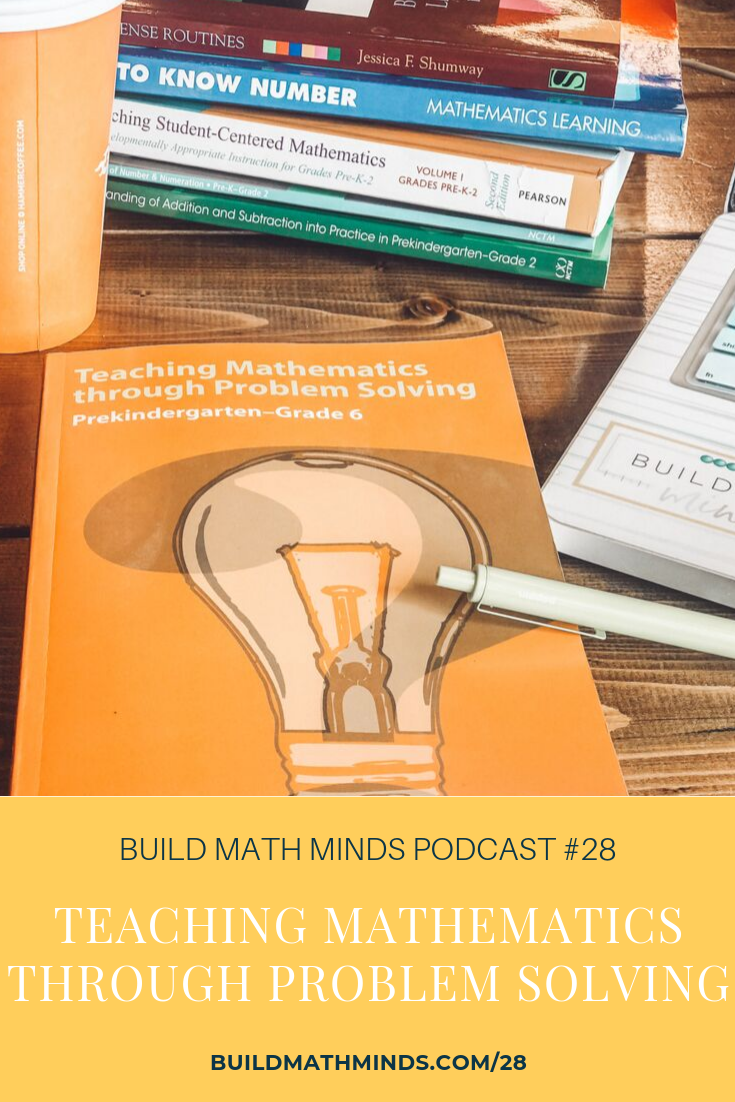Resources mentioned in this episode:
Teaching Mathematics through Problem Solving edited by Frank K. Lester Jr.
Your Guide to Teaching Math Without a Textbook
Teaching Math Without a Textbook video series
Welcome fellow Recovering Traditionalists to Episode 28. Today we are looking at Teaching Mathematics through Problem Solving
Over on my vlog, The Recovering Traditionalist, I’ve been doing a series about teaching math without a textbook. One instructional practice that I’m a big proponent of is teaching math through the use of story problems or what some call Mathematics Problem Solving.
Unfortunately, what we think of about Problem Solving has greatly been influenced by textbooks (just another reason why I’m not a fan of them). If you open up almost any elementary math textbook you will find lessons on Problem Solving. These lessons are well-meaning but they try to teach students steps to follow when solving problems. This has always bugged me and I wasn’t quite sure how to express why until I read it in the book Teaching Mathematics through Problem Solving which is a publication of NCTM and was edited by Frank K. Lester Jr.
The first chapter, Benefits of Teaching through Problem Solving, is written by Diana V. Lambdin. On page 11 she writes:
“A teacher’s goal must be to help students understand mathematics; yet understanding is not something that one can teach directly. No matter how kindly, clearly, patiently or slowly teachers explain, they cannot make students understand. Understanding takes place in the students’ minds as they connect new information with previously developed ideas, and teaching through problem solving is a powerful way to promote this kind of thinking. Teachers can help and guide their students, but understanding occurs as a by-product of solving problems and reflecting on the thinking that went into those problem solutions. For that reason, this book is all about teaching and learning mathematics through problem solving. By solving problems, students learn to make connections among mathematical ideas.”
When we try to teach students steps and procedures for problem solving it turns into students mindlessly solving problems through those steps instead of working to truly understand the problem. I know it’s hard to find the balance of helping your students versus providing too much support.
I once heard Robert Kaplinsky talk about productive struggle using the analogy of a workout spotter. When you are lifting heavy weights you need a spotter but that spotter isn’t there to do the work for you. If they carry too much of the weight you aren’t building your muscles. So I ask you, are you carrying too much of the weight when it comes to your students problem solving??
If you want more information on this I invite you to come over and watch the video series that I’m doing about teaching math without a textbook. All the videos haven’t been released yet. Also you can request the Guide to Teaching Elementary Math Without a Textbook over at buildmathminds.com/notextbook and of course I’ll link to the guide on the show notes page as well. In that guide I give you resources all about teaching mathematics through story problems.
Subscribe and Review in iTunes
Hey, are you subscribed to the Build Math Minds Podcast, yet? If you’re not, make sure to do that today because I don’t want you to miss any episodes! Click here to subscribe to the podcast in iTunes.
While you’re there, don’t forget to leave a review on iTunes too. I would love to know your thoughts and how we can make sure that we give you content that you will really enjoy.
To leave a review, head over to iTunes and click on “Ratings and Reviews” and “Write a Review.” I can’t wait to hear your thoughts about the podcast.




